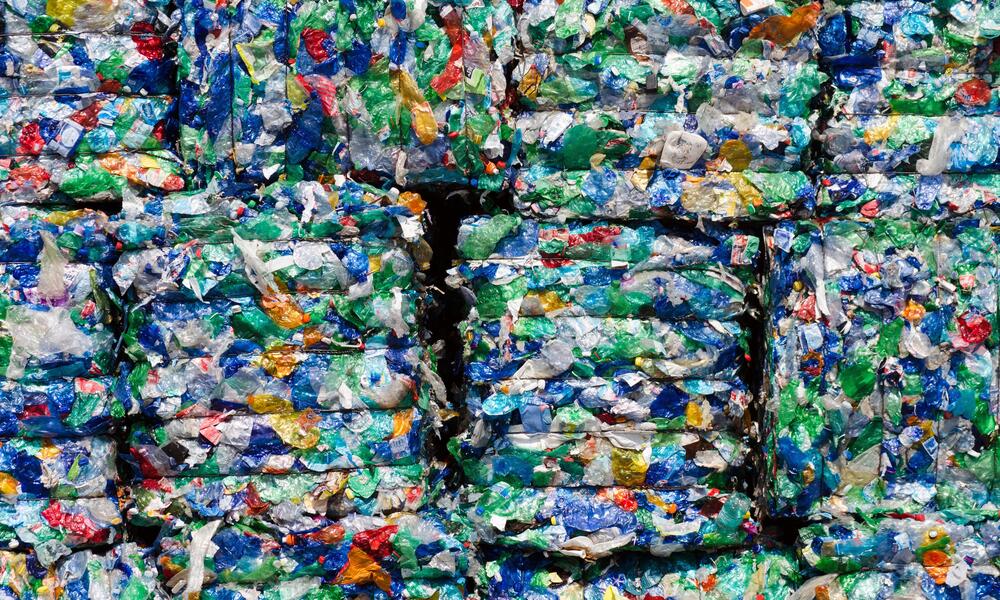
Every day, we open, use, and dispose of countless pieces of packaging—from the bottles and cans that hold our drinks to the soap and shampoo bottles we use every morning, the bags that hold our chips to the protective packaging around our online orders, and everything in between. Every piece of packaging is both mundane and integral to how we feed our families and provide for our wants and needs. It is difficult to think about the conservation impacts of the plastic and materials that surround us, especially as we have become accustomed to and reliant on habits of disposal. Unfortunately, global reliance on materials that become waste creates negative impacts on climate change and public health. The good news is that the solutions are straightforward, even if challenging in their implementation, and there is growing momentum to make them happen.
So, what is the problem exactly? Beyond just plastic production and disposal—which is increasing in scale—materials are routinely disposed of, landfilled, incinerated, or leaked into nature instead of being reused, recycled, or recovered. Since the early 1950s, 8.3 billion metric tons of plastic materials have been generated, and a piece of plastic discarded in 1950 likely still exists today.1 Eight-point-three billion metric tons is just the beginning unless we change course.
Global plastic production is expected to more than triple by 2050, accounting for a full 20% of all oil consumption.2 The expanded production would account for a projected 56 gigatons of greenhouse gas emissions or approximately 10%-13% of the entire carbon budget.3 Today, only 9% of plastic is recycled in the US and 70% of plastic ends up in a landfill.4 In 2016 alone, over 11 million metric tons of plastic waste entered the oceans.5 By 2050 there will be more plastic in the ocean than fish by weight. The impacts, both of producing plastics from fossil fuels and of “disposing of” through landfills, incineration, and leakage into nature, fall disproportionately on underserved communities at home and around the world.
We can prevent this dire future, where plastic production is tripled by 2050, if we choose action now to reduce the number of single-use products produced and to ensure that the rest are made from recycled or responsibly sourced content rather than fossil fuels.
WWF is working with governments and industry to phase out truly unnecessary and problematic materials, identify sustainable alternatives, and creating the standards, accountability, and funding mechanisms to make recycling, reuse, and reduction work. This type of circular economy, underpinned by principles of equity and consumer access, is possible. Governments and industry must come together to make it happen and to make it work for all of us.
What is a circular economy?
In a circular economy, new products would be made from old products, and we would stop throwing items away because we would be able to effectively recycle or reuse valuable resources. Transitioning to a circular economy starts with evaluating the way consumers and businesses create and rely on materials. Our waste management and recycling systems are not currently set up to handle the large amounts of waste we create. © Shutterstock / Frank Fiedler
© Shutterstock / Frank Fiedler
How do we achieve a circular economy for materials use?
Achieving a circular economy is possible when people, industries, and governments come together to reduce single-use production and implement systems to reuse and recycle all materials effectively. These systems need to protect our environment and our communities.
- Corporate and Government Accountability
- A new federal framework called Extended Producer Responsibility can ensure producers of packaging and waste are incentivized to re-use their materials and our waste management system aims for recycling and recovery, not landfilling and pollution
- Materials Re-Evaluation
- Unnecessary and problematic materials must be removed from waste streams to streamline our national ability to process, recover, recycle, and reuse valuable resources.
- Addressing Financial Incentives and Designing for Circularity
- Market signals need to change to incentivize recycled or reusable content and disincentivize harmful management practices and problematic materials.
- Environmental Justice
- New standards must be created to protect public health and ensure all voices are fairly considered when government decisions are made about production plant or facility siting and operation. Additionally, consumers must have equal and straightforward access to the recycling system in a way that will work for all communities.
- International Leadership
- Addressing global mismanagement of waste will require all nations to work toward the same goals, in a way that makes sense for those places. The US should demonstrate leadership at the UN to make this a reality, should focus specific attention on the problems associated with lost and abandoned fishing gear, and should ensure that capacity-building investments are tied to a global strategy capable of delivering real results.
It is our mission to transition to a circular economy, where our packaging and waste leave no impact on our planet, where our materials are recycled and reused to their fullest potential, where resources are responsibly managed, and negative impacts are actively avoided.
Learn more about our vision to achieve a circular economy.
Enviroshop is maintained by dedicated NetSys Interactive Inc. owners & employees who generously contribute their time to maintenance & editing, web design, custom programming, & website hosting for Enviroshop.
